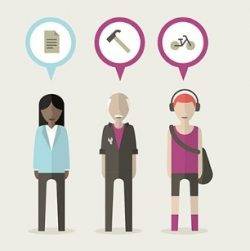May 16, 2017
Manchester leads the UK as regional creative talent market place for tech and media 0

Manchester tops the ranking as the leading UK regional creative talent market, having the key ingredients required by this sector to progress and develop as a future destination for the creative industries (including publishing, film, TV, media, digital, computer programming and information services). This is according to ‘Creative Regions’, a first of its kind report, showcasing the Top 25 Regional Creative locations in the UK [outside of London] published by CBRE. Common characteristics of successful creative locations, suggest the report, include large concentrations of creative businesses and professionals, deep talent pools of highly educated graduate populations, large and growing millennial populations, good transport connections, quality of life and proximity to world class universities with strong research and computer science ratings. The report’s also found that Reading punches well above its weight as a creative talent destination, given the size of its office market; Scotland features particularly well with Edinburgh and Glasgow in the top five list, and 11 of the top 25 creative talent locations are in the East and South East.







 The UK economy is about to be hit by a fall in basic pay awards and real wages warns the CIPD, which has found that employers’ median basic pay expectations in the 12 months to March 2018 have fallen to 1 percent compared to 1.5 percent three months ago, which is lower than at any time during the past three and a half years. The findings from the latest CIPD/The Adecco Group Labour Market Outlook survey are consistent with recent Labour Market Outlook reports, which have indicated a slowing in the rate of basic pay growth, and with official labour market data. The report also found that 12 percent of private sector firms say the UK’s decision to leave the European Union has led them to consider relocating some or all of their business operations abroad. Popular relocation destinations include the Republic of Ireland (18 percent), Germany (17 percent) and France (13 percent).
The UK economy is about to be hit by a fall in basic pay awards and real wages warns the CIPD, which has found that employers’ median basic pay expectations in the 12 months to March 2018 have fallen to 1 percent compared to 1.5 percent three months ago, which is lower than at any time during the past three and a half years. The findings from the latest CIPD/The Adecco Group Labour Market Outlook survey are consistent with recent Labour Market Outlook reports, which have indicated a slowing in the rate of basic pay growth, and with official labour market data. The report also found that 12 percent of private sector firms say the UK’s decision to leave the European Union has led them to consider relocating some or all of their business operations abroad. Popular relocation destinations include the Republic of Ireland (18 percent), Germany (17 percent) and France (13 percent).


 If UK businesses are to remain competitive whoever wins the election on 8 June needs to invest in skills and career advice, as Brexit uncertainty means people are hesitating to move jobs, while there may be barriers in future to hiring workers from abroad; according to the latest research into the UK jobs market by the Recruitment & Employment Confederation (REC). The jobs market experienced the steepest drop in candidate availability for 16 months in April while demand for permanent and short-term staff remained high. Although growth in permanent starting salaries edged down to a four-month low in April, it remained sharp overall and stronger than the series average. Meanwhile, hourly pay rates for short-term staff increased at the sharpest pace in 2017 so far. Vacancies continued to rise markedly in April for both permanent and temporary/contract staff. This was despite growth in demand for both types of staff softening slightly since the previous month.
If UK businesses are to remain competitive whoever wins the election on 8 June needs to invest in skills and career advice, as Brexit uncertainty means people are hesitating to move jobs, while there may be barriers in future to hiring workers from abroad; according to the latest research into the UK jobs market by the Recruitment & Employment Confederation (REC). The jobs market experienced the steepest drop in candidate availability for 16 months in April while demand for permanent and short-term staff remained high. Although growth in permanent starting salaries edged down to a four-month low in April, it remained sharp overall and stronger than the series average. Meanwhile, hourly pay rates for short-term staff increased at the sharpest pace in 2017 so far. Vacancies continued to rise markedly in April for both permanent and temporary/contract staff. This was despite growth in demand for both types of staff softening slightly since the previous month.























